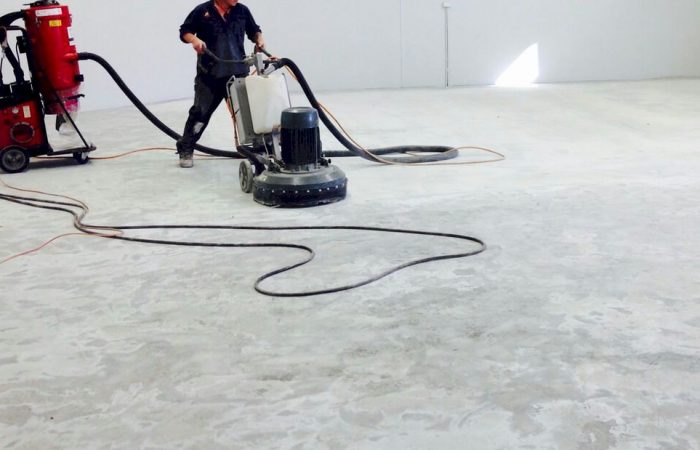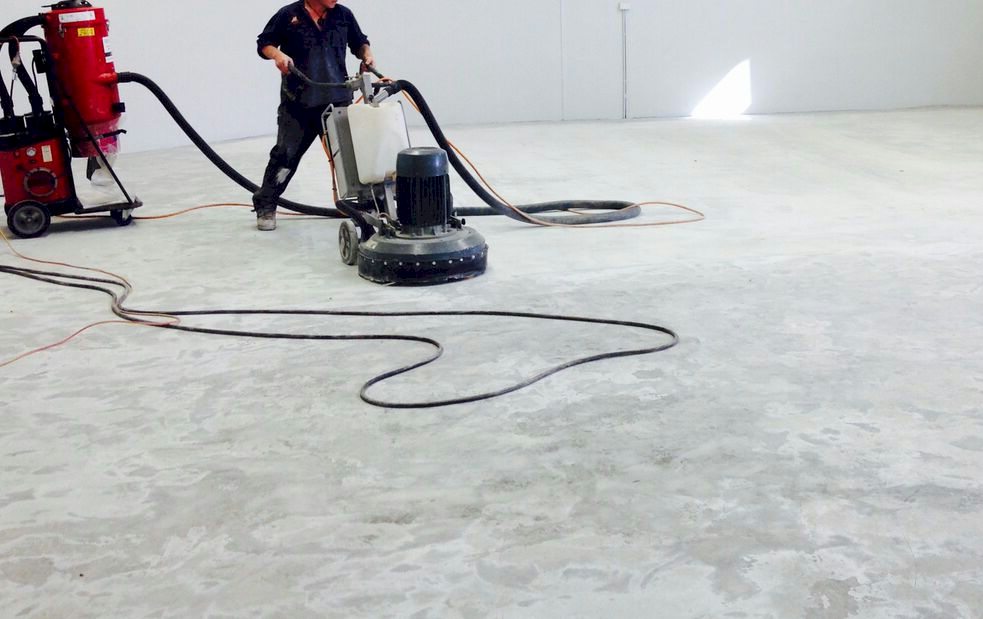Concrete Grinding
Concrete grinding and concrete cutting are very dusty jobs in the construction industry, both posing a serious health risk to construction workers, often referred to as masons. Masonry blocks, bricks, and concrete slabs contain concentrated amounts of crystalline silica. When these materials are dry-cut they release silica-containing dust into the workers’ breathing zone. Regular exposure to this hazardous dust can lead to the development of silicosis, a deadly and incurable lung disease. Construction workers do die each year due to exposure to dangerously high levels of silica dust.
Masons and construction workers face various levels of exposure to silica dust depending on the task being performed. For instance, there is less potential for overexposure for masons who perform wet tasks such as laying blocks in mortar or wet cutting concrete.
On the other hand, masons who dry cut concrete blocks and slabs regularly face exposures that are up to 10 times higher than those cutting wet tasks. Dry cutting tasks increase the likeliness that an employee may develop a lung disease over a period of 10 or more years.
While dry cutting increases the likeliness of developing a lung related illness, the most dangerous task affecting the health of masons is grinding out deteriorated mortar from brick or concrete structures. Exposures from this type of work can be up to 50 times worse and can cause lung diseases to cultivate over a period of several months to 10 years.
Work Practices to Control Silica Dust Production
Several approaches can be taken to help protect construction workers against the dangers of airborne silica dust. Control methods and work practices that reduce dust accumulation in concrete cutting and grinding include:
- Wet Cutting (Water Spraying) – This engineering control helps to eliminate silica dust from ever becoming airborne and is the most efficient method of dust control in concrete cutting and grinding. Saws and grinding equipment should be fitted with a wet-cutting port, or alternatively, a portable water tank or cart can be supplied. Masons should create a plan prior to arriving to the job location to make certain that the resources and manpower required are accessible for successful wet cutting projects.
- HEPA Vacuum & Exhaust Ventilation Systems – When dust cannot be eliminated at the source with concrete grinding, industrial vacuums and exhaust ventilation systems are extremely useful tools. These systems can suck up dust as it forms and can be extremely beneficial during jobsite clean-up. Vacuum systems should be equipped with a high-efficiency particulate air (HEPA) filter that prevents collected dust from escaping the vacuum system.
- Training – Employees should receive thorough training on the dangers of silica dust through concrete grinding. Training should cover prevention and control methods, respiratory protective equipment, as well as cleaning methods when work is completed.
Concrete Grinding Vacuums
The Concrete Grinding industry is one of the hardest users of industrial vacuum cleaners. However we have a range of solutions available that will work for you and make your business compliant. Click here to request more information and pricing for commercial and industrial vacuums that can help you work in the concrete grinding and cutting industry.
You can also call our Auckland Office on +64 9 520 20 30, Wellington Office +64 4 234 1020 or use the contact form below:
Like most businesses we’re social – you can follow us on: Facebook, Instagram, LinkedIn, Twitter
Follow us and we’ll follow you, now that’s social.


